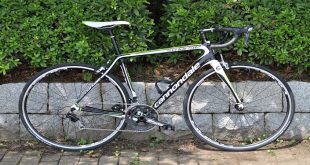No, not all mountain bike handlebars have the same diameter. Mountain bike handlebars come in different diameters, depending on the type and intended use of the bike.
It is crucial to choose the right handlebar diameter to ensure compatibility with other bike components such as the stem and grips. The two most common handlebar diameters are 31. 8mm and 35mm. The smaller diameter, 31. 8mm, is suitable for most mountain bikes and offers a balance between weight and strength.
On the other hand, the larger 35mm diameter handlebars are becoming increasingly popular as they provide improved stiffness and control for aggressive riding styles. When selecting handlebars, consider the intended use and personal preferences to ensure a comfortable and efficient riding experience.
Understanding Mountain Bike Handlebars
When it comes to mountain biking, the handlebars play a crucial role in enhancing control and maneuverability. However, not all mountain bike handlebars are the same diameter. Understanding the different types of handlebars used in mountain biking, as well as their importance in bike control, is essential for riders of all skill levels. Let’s take a closer look at these aspects.
Different Types Of Handlebars Used In Mountain Biking
Mountain biking offers a variety of handlebar options, each designed for specific riding styles and preferences. Here are the most commonly used handlebars in the world of mountain biking:
| Handlebar Type | Description |
|---|---|
| Flat Handlebars | These handlebars have a simple, straight design without any rise or sweep. They provide a more upright riding position and are ideal for cross-country riding. |
| Riser Handlebars | Riser handlebars have an upward bend at the center, providing riders with a more comfortable and relaxed position. They are popular among downhill and trail riders. |
| Downhill Handlebars | Downhill handlebars have a wider and longer design, offering greater control and stability during intense downhill descents. They are characterized by a pronounced rise and significant backsweep. |
| Drop Bars | Drop bars are commonly associated with road bikes, but they can also be found on some mountain bikes. They provide an aerodynamic riding position but are less common in off-road biking. |
Importance Of Handlebars In Controlling The Bike
The handlebars of a mountain bike serve as a crucial connection between the rider and the bike itself. They play a vital role in controlling the bike’s steering, stability, and overall performance. Through the handlebars, riders can effortlessly navigate obstacles, make quick directional changes, and maintain balance on various terrains. Whether it’s climbing steep hills or descending rugged trails, having the right handlebars ensures riders can maintain optimum control in any situation.
How Handlebars Contribute To The Overall Riding Experience
The choice of handlebars directly impacts the overall riding experience of mountain bikers. Different handlebar types offer distinct advantages, enabling riders to optimize their performance and comfort. A well-suited handlebar can enhance confidence, reduce hand fatigue, and provide a more natural riding position. By selecting the appropriate handlebars, riders can fine-tune their bike’s handling characteristics to match their riding style and preferences, making every adventure on the trails more enjoyable and fulfilling.
Handlebar Diameter: A Key Differentiating Factor
When it comes to mountain biking, the handlebar diameter plays a crucial role in determining the overall bike handling and control. Different handlebar diameters are designed to suit various riding styles and preferences. Understanding the significance of handlebar diameter can help you make an informed decision when selecting the right handlebars for your mountain bike.
How Handlebar Diameter Impacts Bike Handling And Control
The diameter of the handlebar has a direct impact on how your mountain bike handles and responds to your input. A narrower handlebar diameter, typically between 25.4mm (1 inch) to 31.8mm (1.25 inches), offers precise steering control, making it ideal for technical and tight trails. On the other hand, a wider handlebar diameter, ranging from 35mm to 35.9mm, provides enhanced stability and maneuverability, making it suitable for rough and aggressive terrains.
With a narrower handlebar, you can easily navigate through narrow gaps and squeeze your bike between obstacles effortlessly. The reduced width also promotes a more aerodynamic riding position, allowing you to slice through the air with minimal resistance. Conversely, a wider handlebar offers increased leverage, providing better control when tackling steep descents and twisting trails. The wider stance gives you improved stability, especially when negotiating sharp turns and jumps.
Common Handlebar Diameters Used In The Industry
In the mountain biking industry, there are a few common handlebar diameters that you will come across. These include:
| Handlebar Diameter | Common Uses |
|---|---|
| 25.4mm (1 inch) | Lightweight and suitable for XC (cross-country) riding |
| 31.8mm (1.25 inches) | Versatile and commonly used for all-mountain and trail riding |
| 35mm to 35.9mm | Widest and preferred by downhill and enduro riders for maximum control and stability |
It’s important to note that handlebar diameter is not the only factor to consider when choosing handlebars for your mountain bike. Other factors like rise, width, and materials used also contribute to the overall feel and performance of the handlebars. Therefore, it’s crucial to consider your riding style, terrain, and personal preferences before deciding on the handlebar diameter for your mountain bike.
Pros And Cons Of Different Handlebar Diameters
In the world of mountain biking, handlebars play a crucial role in determining the rider’s control, comfort, and overall riding experience. When it comes to handlebar diameters, there are different options available, each with its own set of advantages and disadvantages. In this section, we will discuss the pros and cons of standard handlebar diameters, the performance and suitability of different diameters for specific riding styles, and how these diameters can affect comfort, stability, and maneuverability.
Discussing The Advantages And Disadvantages Of Standard Handlebar Diameters
Standard handlebar diameters typically fall into two main categories – 31.8mm and 35mm. Each diameter has its own unique characteristics that riders can consider when choosing their handlebars.
31.8mm Handlebars
The 31.8mm handlebar diameter has been a long-standing standard in the mountain biking industry. Here are the pros and cons of this diameter:
| Advantages | Disadvantages |
|---|---|
| – Lightweight and flexible | – Less resistant to flex and vibration |
| – More options available in terms of handlebar styles and accessories | – Limited stiffness compared to larger diameters |
| – Offers a comfortable and forgiving ride |
35mm Handlebars
With advancements in technology, a larger diameter option of 35mm has emerged. Here are the pros and cons of this diameter:
| Advantages | Disadvantages |
|---|---|
|
|
|
|
|
Comparing The Performance And Suitability Of Different Diameters For Specific Riding Styles
Now that we’ve discussed the advantages and disadvantages of standard handlebar diameters, it’s important to consider which diameter is best suited for specific riding styles.
- 31.8mm handlebars are well-suited for cross-country riders who prioritize lightweight and comfortable rides.
- 35mm handlebars, on the other hand, are ideal for riders who engage in aggressive downhill or trail riding, demanding higher levels of control and stability.
How Different Handlebar Diameters Affect Comfort, Stability, And Maneuverability
The handlebar diameter you choose can significantly impact your ride’s comfort, stability, and maneuverability. Here’s how:
- 31.8mm handlebars, with their flexibility and forgiving nature, provide a comfortable and smooth ride. However, they may not offer the same level of stability and precision as their larger counterparts.
- 35mm handlebars, with their increased stiffness and rigidity, provide enhanced stability and control, allowing riders to confidently tackle challenging terrains. However, they may sacrifice some comfort due to increased vibration transfer.
Ultimately, the choice between handlebar diameters boils down to personal preference and riding style. Consider your priorities, evaluate your riding needs, and choose a handlebar diameter that aligns with your goals, ensuring an optimized riding experience.
Choosing The Right Handlebar Diameter For Your Riding Style
When it comes to mountain biking, the handlebar is an essential component that can significantly impact your riding experience. One important aspect to consider when choosing a handlebar is its diameter. Although you may assume that all mountain bike handlebars have the same diameter, this is not the case. A handlebar’s diameter can vary, and selecting the right size for your riding style is crucial to ensure comfort and control on the trails.
Factors To Consider When Selecting A Handlebar Diameter
Several factors should influence your decision when it comes to handlebar diameter. Consider the following aspects as you choose the right size for your mountain bike:
- Body size and personal measurements
- Riding preferences and style
- The type of terrain you typically ride
By taking these factors into account, you can find a handlebar diameter that complements your body size and satisfies your unique riding needs.
Matching Handlebar Diameter To Your Body Size And Riding Preferences
Matching the handlebar diameter to your body size and riding preferences is crucial to ensure optimal comfort and control. Here are some considerations:
- Body size: The width of the handlebar should match the breadth of your shoulders for an ergonomic riding position. Riders with broader shoulders may opt for wider handlebars, while narrower options suit riders with more petite builds.
- Riding style: Your preferred riding style also plays a role. For example, if you enjoy aggressive downhill riding that requires a lot of maneuverability, a narrower handlebar may be appropriate. Conversely, riders who focus on cross-country cycling may benefit from wider handlebars, providing improved stability.
It’s important to remember that these are general guidelines, and personal preference should ultimately dictate your choice of handlebar diameter.
Expert Recommendations For Different Types Of Mountain Biking
When it comes to specific types of mountain biking, experts offer recommendations for handlebar diameter based on the style of riding. Here are some suggestions:
| Type of Mountain Biking | Ideal Handlebar Diameter |
|---|---|
| Cross-Country | Narrow to medium-width bars for improved handling and power transfer |
| All-Mountain/Enduro | Medium to wide bars for enhanced stability on technical terrain |
| Downhill/Freeride | Wide bars for maximum control and maneuverability |
These recommendations serve as valuable starting points, but experimenting with different handlebar diameters might be necessary to find what suits you best.
Remember, choosing the right handlebar diameter should be based on a combination of your body size, riding preferences, and the type of terrain you encounter. By taking the time to consider these factors and listening to expert recommendations, you can select a handlebar diameter that enhances your mountain biking experience. So, go out there, hit the trails, and enjoy the ride!
Understanding Handlebar Clamp Sizes And Compatibility
When it comes to selecting the right mountain bike handlebars, there are various factors to consider. One important aspect is the handlebar clamp size and its compatibility with the stem. This is crucial for achieving a proper fit, ensuring your handlebars stay securely in place and allowing for optimal control and performance. In this article, we will explore the relationship between handlebar diameter and clamp size, the importance of ensuring a proper fit between handlebars and stems, as well as the potential compatibility issues that may arise when swapping handlebars with different diameters.
Explaining The Relationship Between Handlebar Diameter And Clamp Size
The handlebar clamp size refers to the diameter of the area where the handlebars attach to the stem. It is essential to match the clamp size of your handlebars with the clamp size of your stem to ensure a secure and safe fit. Common handlebar clamp sizes for mountain bikes are 31.8mm and 35mm, although other sizes do exist. Different bike brands or models may have specific clamp sizes, so it is crucial to check your bike’s specifications or consult an expert before purchasing new handlebars.
Ensuring Proper Fit Between Handlebars And Stem
A proper fit between handlebars and stem is vital for a comfortable and controlled riding experience. To ensure a proper fit, consider these factors:
- Handlebar Diameter: Determine the diameter of your current handlebars before purchasing new ones. If you are unsure, measure the diameter using a caliper or consult the manufacturer’s specifications.
- Stem Clamp Size: Check the clamp size of your stem to ensure compatibility with the handlebars you intend to purchase or replace.
- Compatibility: Confirm that the handlebars and stem from the same manufacturer are designed to work together. Sometimes, specific handlebars are only compatible with certain stems due to differences in design or clamp sizes.
Compatibility Issues When Swapping Handlebars With Different Diameters
Swapping handlebars with different diameters can lead to compatibility issues. If you attempt to install handlebars with a larger or smaller diameter than your current stem clamp size, they likely will not fit properly. Always ensure that your new handlebars and stem have matching clamp sizes. Additionally, be cautious when choosing handlebars with significantly different diameters, as they may require adjustments to your bike’s setup or potentially a new stem with a different clamp size to accommodate the change.
Frequently Asked Questions Of Are All Mountain Bike Handlebars The Same Diameter?
Are All Mountain Bike Handlebars The Same Diameter?
No, mountain bike handlebars come in different diameters. The most common size is 31. 8mm, but some bikes may have handlebars with a narrower diameter of 25. 4mm. It’s essential to consider the diameter when purchasing new handlebars to ensure compatibility with your bike.
What Are The Benefits Of Wider Handlebars On A Mountain Bike?
Wider handlebars provide better stability and control during aggressive mountain biking. They offer increased leverage, making it easier to steer through tight corners and navigate rough terrains. Wider handlebars also improve overall bike handling and can help alleviate stress on your wrists and shoulders.
Can I Change The Handlebars On My Mountain Bike?
Yes, you can change the handlebars on your mountain bike, but it’s crucial to ensure compatibility with your bike’s stem and other components. Consider factors like handlebar diameter, width, rise, and materials when selecting new handlebars. It’s recommended to consult a bike mechanic or refer to your bike’s manufacturer guidelines for proper installation.
Conclusion
Mountain bike handlebars come in different diameters and finding the right one is crucial for a comfortable and efficient ride. By understanding the factors that impact handlebar diameter, such as riding style, preference, and bike specifications, you can make an informed decision.
Remember to consider comfort, control, and overall riding experience when choosing the right handlebars for your mountain bike.
 AmFana Pedal through life's journey: Unchain the Adventure!
AmFana Pedal through life's journey: Unchain the Adventure!





